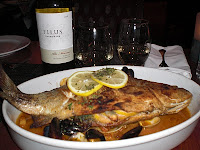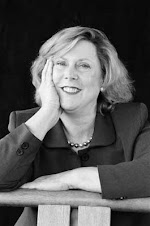
“He loves wines enough to understand them deeply and fundamentally”
PACIFIC CREST GRILL’S
PACIFIC CREST GRILL’S
AWARD WINNING WINE PROGRAM
Beyond wine drinkers, there are wine lovers. Ed Coleman, owner of the Pacific Crest Grill in downtown Truckee, CA, is one of those who love wines enough to understand them deeply and fundamentally. That’s why the wine list of 400+ wines wins Wine Spectator’s Award of Excellence year after year. And that’s why there’s a growing emphasis on Ed’s list regarding biodynamic and sustainable wines.
Pacific Crest Grill’s dining room is charming; it features wonderful work by local artists, an Amish-style communal table, plenty of smaller tables, and an antique back bar that used to be part of Coburn Station, an old famous Truckee saloon that flourished in the 1920s. With elegant dishes and fantastic wines, you can all the while taking comfort in Ed’s “fiercely sustainable” philosophy of low-carbon footprint purchasing, a locavore orientation, and a championing of environmental responsibility from farm to fork, and terroir to tumbler.
Amish-style communal table, plenty of smaller tables, and an antique back bar that used to be part of Coburn Station, an old famous Truckee saloon that flourished in the 1920s. With elegant dishes and fantastic wines, you can all the while taking comfort in Ed’s “fiercely sustainable” philosophy of low-carbon footprint purchasing, a locavore orientation, and a championing of environmental responsibility from farm to fork, and terroir to tumbler.
A biodynamic wine can be quickly defined as one that is made from a vineyard that uses the principles of biodynamic agriculture, which includes ethical-spiritual considerations. This type of viticulture views the farm as a cohesive, interconnected living system. A sustainable wine is not necessarily organic wine, but it also does not exclude this definition; the term relates generally to vineyards and wineries that are socially and environmentally responsible in their production and even their distribution practices, including low-carbon footprint accountability.
Ed keeps many of the wines for the Pacific Crest Grill in a wine cellar under the restaurant that was most likely built in the late 1880’s initially and then redone in brick in 1928. Wine Director Peter Fain keeps the inventory in good order, and the restaurant prides itself on its big selection of half-bottles.
The 2008 Gamble Vineyard Sauvignon Blanc, Yountville, is a bit sweeter than many California sauvignon blancs. It is clean, crisp, has a hint of Napa grassiness, and a lemon-lime nice acidity. 13.5% alcohol. The winery uses organic and natural farming practices, winemaking that emphasizes minimal intervention and single-vineyard, micro-lot fermentations, and the target is creation of wines that are pure, accurate and true to the source. $8.50/glass; $32/bottle. It was perfectly paired with an asparagus salad with celery root, house-cured bacon and a banyuls vinaigrette.
The 2008 Calera Chardonnay, California Central Coast, is a blend from nine vineyards in Monterey, Santa Clara, and San Benito counties, most of which are biodynamically farmed. This is an excellent entry-level Chardonnay from an iconic winery. It has a nice smokiness, with tropical fruit, honeysuckle, currant and maybe a sweet orange taste, yet it is creamy and rich. 14.4% alcohol. $10/glass; $38/bottle. Pairing was with a tuna tartare prepared with avocado mousse, apples, jicama, pinenuts, with truffle essence. This lovely dish reflects the Mediterranean influence of much of Pacific Crest’s cuisine.
The 2004 Le Cigare Volant, Bonny Doone Vineyard, Santa Cruz, CA, is a blend of Grenache, Syrah, Mouvedre and Carignon. It is sustainable and biodynamic, vibrant, fruity and floral all at once! 13.5% alcohol, absolutely delicious! 13.5% alcohol. $25 for the 375 ml half bottle. Paired with a house-made gnocchi with duck confit, port au jus.
 King Estate’s 2007 Pinot Noir, Oregon, has a base of organically grown estate fruit from the King Estate ‘Domaine’ vineyard . It has a peppery taste, faint rose petal too, cherry, plum and orange peel both on the nose and in the mouth. 13.0% alcohol. $27 for a 375 ml half bottle. Pair it with the white bass, prawn, fennel, saffron couscous dish for a knock-your-socks off experience!
King Estate’s 2007 Pinot Noir, Oregon, has a base of organically grown estate fruit from the King Estate ‘Domaine’ vineyard . It has a peppery taste, faint rose petal too, cherry, plum and orange peel both on the nose and in the mouth. 13.0% alcohol. $27 for a 375 ml half bottle. Pair it with the white bass, prawn, fennel, saffron couscous dish for a knock-your-socks off experience!
The Ramsay Cabernet Sauvignon 2006, North Coast, gives both fig and strawberry aroma, blackberry and a nice long finish on the palate. Ramsay is a companion label to Kent Rasmussen wines, and a good value for a fine and drinkable wine. 13% alcohol. $8.50/glass; $32/bottle. The braised short ribs from Trimmer Ranch, with housemade pancetta and celery root puree…wow, a great pairing!
Dinner at Pacific Crest Grill is served nightly from 5:30 p.m. to close, lunch M-F from 11:30 a.m. to 3 p.m. and brunch Sat-Sum from 11 a.m. to 3 p.m. Pacific Crest Grill & Bar of America is located at 10042 Donner Pass Road, in historic downtown Truckee. Reservations recommended at 530-587-2626.
Beyond wine drinkers, there are wine lovers. Ed Coleman, owner of the Pacific Crest Grill in downtown Truckee, CA, is one of those who love wines enough to understand them deeply and fundamentally. That’s why the wine list of 400+ wines wins Wine Spectator’s Award of Excellence year after year. And that’s why there’s a growing emphasis on Ed’s list regarding biodynamic and sustainable wines.
Pacific Crest Grill’s dining room is charming; it features wonderful work by local artists, an
 Amish-style communal table, plenty of smaller tables, and an antique back bar that used to be part of Coburn Station, an old famous Truckee saloon that flourished in the 1920s. With elegant dishes and fantastic wines, you can all the while taking comfort in Ed’s “fiercely sustainable” philosophy of low-carbon footprint purchasing, a locavore orientation, and a championing of environmental responsibility from farm to fork, and terroir to tumbler.
Amish-style communal table, plenty of smaller tables, and an antique back bar that used to be part of Coburn Station, an old famous Truckee saloon that flourished in the 1920s. With elegant dishes and fantastic wines, you can all the while taking comfort in Ed’s “fiercely sustainable” philosophy of low-carbon footprint purchasing, a locavore orientation, and a championing of environmental responsibility from farm to fork, and terroir to tumbler.A biodynamic wine can be quickly defined as one that is made from a vineyard that uses the principles of biodynamic agriculture, which includes ethical-spiritual considerations. This type of viticulture views the farm as a cohesive, interconnected living system. A sustainable wine is not necessarily organic wine, but it also does not exclude this definition; the term relates generally to vineyards and wineries that are socially and environmentally responsible in their production and even their distribution practices, including low-carbon footprint accountability.
Ed keeps many of the wines for the Pacific Crest Grill in a wine cellar under the restaurant that was most likely built in the late 1880’s initially and then redone in brick in 1928. Wine Director Peter Fain keeps the inventory in good order, and the restaurant prides itself on its big selection of half-bottles.
The 2008 Gamble Vineyard Sauvignon Blanc, Yountville, is a bit sweeter than many California sauvignon blancs. It is clean, crisp, has a hint of Napa grassiness, and a lemon-lime nice acidity. 13.5% alcohol. The winery uses organic and natural farming practices, winemaking that emphasizes minimal intervention and single-vineyard, micro-lot fermentations, and the target is creation of wines that are pure, accurate and true to the source. $8.50/glass; $32/bottle. It was perfectly paired with an asparagus salad with celery root, house-cured bacon and a banyuls vinaigrette.
The 2008 Calera Chardonnay, California Central Coast, is a blend from nine vineyards in Monterey, Santa Clara, and San Benito counties, most of which are biodynamically farmed. This is an excellent entry-level Chardonnay from an iconic winery. It has a nice smokiness, with tropical fruit, honeysuckle, currant and maybe a sweet orange taste, yet it is creamy and rich. 14.4% alcohol. $10/glass; $38/bottle. Pairing was with a tuna tartare prepared with avocado mousse, apples, jicama, pinenuts, with truffle essence. This lovely dish reflects the Mediterranean influence of much of Pacific Crest’s cuisine.
The 2004 Le Cigare Volant, Bonny Doone Vineyard, Santa Cruz, CA, is a blend of Grenache, Syrah, Mouvedre and Carignon. It is sustainable and biodynamic, vibrant, fruity and floral all at once! 13.5% alcohol, absolutely delicious! 13.5% alcohol. $25 for the 375 ml half bottle. Paired with a house-made gnocchi with duck confit, port au jus.
 King Estate’s 2007 Pinot Noir, Oregon, has a base of organically grown estate fruit from the King Estate ‘Domaine’ vineyard . It has a peppery taste, faint rose petal too, cherry, plum and orange peel both on the nose and in the mouth. 13.0% alcohol. $27 for a 375 ml half bottle. Pair it with the white bass, prawn, fennel, saffron couscous dish for a knock-your-socks off experience!
King Estate’s 2007 Pinot Noir, Oregon, has a base of organically grown estate fruit from the King Estate ‘Domaine’ vineyard . It has a peppery taste, faint rose petal too, cherry, plum and orange peel both on the nose and in the mouth. 13.0% alcohol. $27 for a 375 ml half bottle. Pair it with the white bass, prawn, fennel, saffron couscous dish for a knock-your-socks off experience!The Ramsay Cabernet Sauvignon 2006, North Coast, gives both fig and strawberry aroma, blackberry and a nice long finish on the palate. Ramsay is a companion label to Kent Rasmussen wines, and a good value for a fine and drinkable wine. 13% alcohol. $8.50/glass; $32/bottle. The braised short ribs from Trimmer Ranch, with housemade pancetta and celery root puree…wow, a great pairing!
Dinner at Pacific Crest Grill is served nightly from 5:30 p.m. to close, lunch M-F from 11:30 a.m. to 3 p.m. and brunch Sat-Sum from 11 a.m. to 3 p.m. Pacific Crest Grill & Bar of America is located at 10042 Donner Pass Road, in historic downtown Truckee. Reservations recommended at 530-587-2626.
~ ~ ~ ~ ~ ~
© 2010 Barbara Keck
For more information on dining and the wide range of activities around Lake Tahoe, see the online version of The Tahoe Weekly. This article appeared in my column "It's Grape" in March 2010.
Watch for my forthcoming book, scheduled for publication in 2011, "Mountain Wineries of the Sierras and Its Foothills."
© 2010 Barbara Keck
For more information on dining and the wide range of activities around Lake Tahoe, see the online version of The Tahoe Weekly. This article appeared in my column "It's Grape" in March 2010.
Watch for my forthcoming book, scheduled for publication in 2011, "Mountain Wineries of the Sierras and Its Foothills."


















